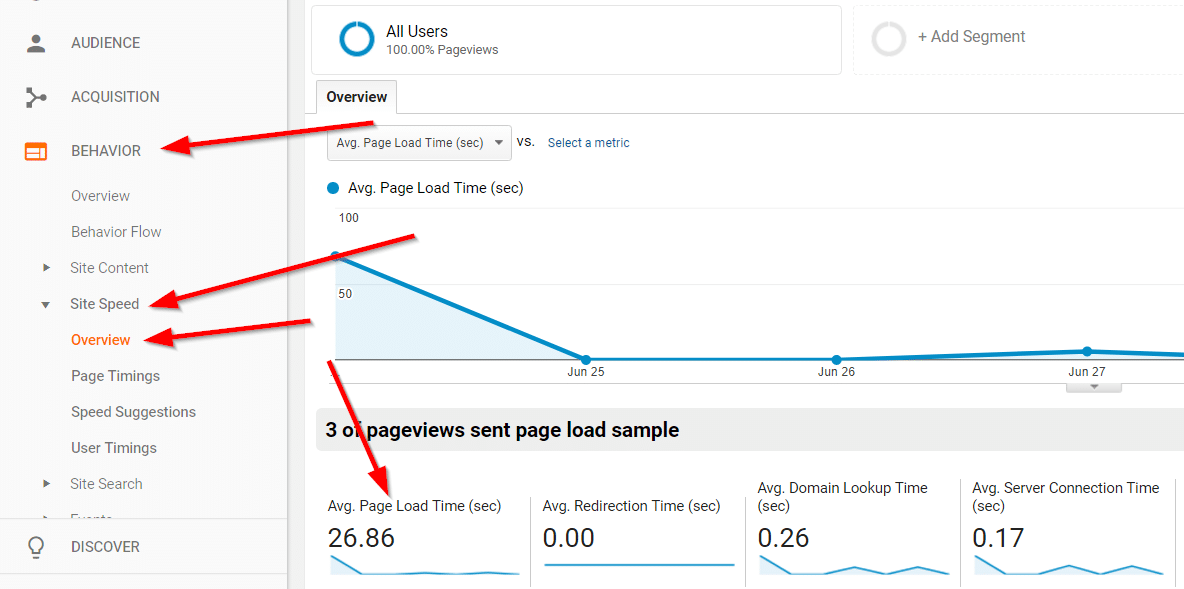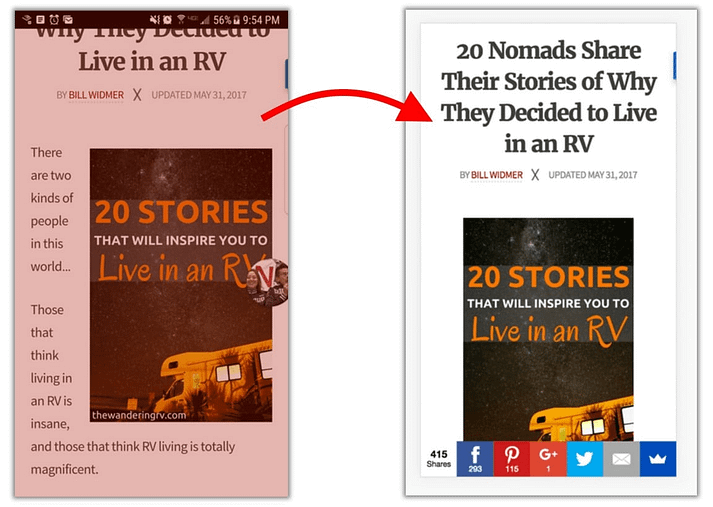
Absolute 5 SEO Strategies for Magento Store
January 6, 2024
5 Essential WordPress Plugins
January 6, 2024Absolute 5 SEO Strategies WordPress Store
1. Improve your WordPress site speed ????
Site speed is important for a lot of reasons. People will tend to leave if a site takes longer than three seconds to load, for one.
But it’s also important to Google.
Contrary to popular belief, Google doesn’t reward fast sites . Instead, they penalize slow ones. So if your site is slow, speeding it up for mobile and desktop can remove the penalty and improve your rankings.
First, check your site speed
You can check your site speed using a tool like Pingdom. However, it’s more accurate to check your speed in Google Analytics, if you have it set up.
(If not, definitely set it up – it’s really easy and gives you a lot of awesome data on your site.)
To find your site speed in Google Analytics go to Behavior → Site Speed → Overview.

You’ll probably see a high number here – don’t freak out. This isn’t the time it takes for the above the fold content to load (which is what most of your visitors care about), but rather how long it takes for everything on the page to load, including backend code.
Next, follow these three tips to quickly improve your WordPress site speed
- Install and set up one of the popular caching plugins.
- Compress and re-upload any huge image files on your site, or use an image optimizer like Optimole.
- Get a better hosting provider (we recommend Namecheap or Hostinger).
Now, #2 could take a long time to do if you have a lot of images and you choose not to use an image optimizer. However, it is one of the best and easiest ways to speed up your site for better search rankings.
Again, your best bet here for a quick and easy win is to use the Optimole plugin:
Once you take these steps, check your site speed again on Pingdom – you should see a significant increase! If not, you may need to hire a developer to help with the more complex speed issues.
Alternatively, you can check to see if your site is experiencing any of the most common problems affecting site performance, and then look at some other ways to speed up WordPress.
Now you know 25% of Absolute 5 SEO Strategies WordPress Store!
2. Optimize your WordPress site for mobile ????
Next up on our list of WordPress SEO tips might be intuitive to some of you already. In fact, if you’re reading this on your mobile phone right now, one might even say that it’s staring you right in the face.
I’m talking about the prevalence of mobile phone usage. Mobile has long overtaken desktop in the number of users browsing online. And it’s only going to continue increasing as phones get better and voice search improves.
Google knows that. And they reward mobile-friendly sites with better rankings.
It makes sense – Google’s goal is to provide the absolute best experience for the end user. Obviously, viewing a mobile site on a mobile device is going to provide the best experience.
Here’s an example on one of my sites (ignore the orange in the left screenshot – I had blue light blocking turned on at the time):

See how the image was centered so the text didn’t get forced left align? Makes it so much easier to read (and way less ugly)!
Now you know 50% of Absolute 5 SEO Strategies WordPress Store!
3. Add an author bio box ????????
Number three on my list of WordPress SEO tips might come as a surprise to many. That’s because, in the past, Google downplayed the importance of author bios. However, in recent years, we’ve witnessed the growing significance of author bios to Google, and a good example of this is the introduction of Google E-E-A-T.
E-E-A-T stands for Experience, Expertise, Authorativeness, and Trustworthiness. It’s an acronym that represents an important component of Google’s Search Quality Rater Guidelines, which is one of the metrics used by Google’s human Raters to rank websites:
“When determining page quality, raters must consider EEAT: the first-hand experience of the creator, the expertise of the creator, the authoritativeness of the creator, the main content itself and the website, and trust, which is the extent to which the page is accurate, honest, safe, and reliable.”
Since Google values experience, expertise, authority, and trustworthiness when it comes to content creators, it makes sense to create an author bio that reflects this.
But where do you start? Here are a few tips:
- Be concise. Readers often skim through bios so aim for anything between 50 – 100 words.
- Highlight your expertise. Your author bio is the perfect place to mention your relevant skills, qualifications, or any noteworthy accomplishments.
- Include a good photo. Including a photo helps to humanize your online identity. Your readers might not remember your name, but they’ll probably remember that face!
- Write in third person. This generally reads more formally as opposed to writing in first person.
- Include a link to your website or social media. To round off your author bio, write a sentence that includes a link to where your readers can find you. Usually, this means a link to your website’s homepage or a professional social media platform (e.g., LinkedIn).
4. Delete and redirect thin content ❌ ↪️
Thin content is any page on your site that’s under 300 words long and doesn’t provide clear value to the reader.
The reason we want to delete thin content is that it doesn’t provide any benefit. If you think of your site as a farm, and Google’s “SEO juice” as your farm’s water, you want the water going to the right places.
If you have a lot of dead weight pages, you’re basically watering dead plants. Instead, uproot those plants and keep your water going to the plants already performing well, so they can perform even better.
Rather than trying to explain how to find thin content and what to do with it, I’ll just point you to this guide by Lee Wilson and continue with my WordPress SEO tips.
✋ Word of Warning: It can be difficult to determine whether content is “thin” or not if you run an ecommerce store because many product pages will be under this word count. So be careful!
5. Ensure all your images have alt text ????️
As of the time of this writing, Google image search accounts for just over 20% of all of Google’s search traffic [2].
That’s more than a fifth of all of Google’s traffic.
Consider that when we first published the very article you are reading right now, that number stood at just around 10%. So it more than doubled in less than a decade!
If you want to take advantage of some of that traffic, then adding alt text to images is a super easy and simple way to do it.
Plus, Google uses alt text to determine the topic of a page, so it can even help your search rankings on non-image search as well.
To find all the images on your site lacking alt text, you can use a tool like Screaming Frog. The free version won’t show you all of them, but it will show you a good chunk.
Now you know 100% of Absolute 5 SEO Strategies WordPress Store!
Visit our website on: https://swatechnologies.online/
Visit our facebook page on: https://web.facebook.com/swatechnologies


